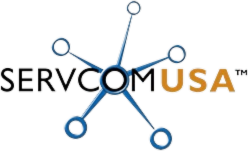Guide to Securing Your Business from Cyberattacks
Post pandemic, cybersecurity is as crucial as ever. Businesses now face ever-growing cyber threats, and it’s vital to implement a robust security solution.
You’ve probably heard of companies paying massive fines, halting their operations, or even shutting down entirely as a result of a simple system hack. For instance, global meatpacker JBS recently fell victim to a ransomware attack that temporarily halted its operations. What’s more, the company had to pay $11 million to cybercriminals as ransom.
In South Carolina, a wave of cyber incidents has led to catastrophic losses and reputational damage. The victims range from local government and public safety agencies to medical and legal practitioners and learning facilities.
With the increasingly complex nature of cyberattacks, companies must implement a cybersecurity culture and deploy robust solutions. But before you execute the preventative measures, you must be aware of the cyber threats, protocols, and tools that threat actors use.
Most Common Types of Cybersecurity Threats in 2021
Threat actors have gotten smarter and are now using advanced tactics and cunning approaches to infiltrate networks.
Here are the common forms of cyberattacks currently targeting organizations:
- Malware – Cybercriminals are now using software to perform malicious tasks on target networks or devices, including overrunning the system and corrupting data.
- Phishing – This email-borne attack tricks users into disclosing sensitive data or clicking a malicious link within the message to download malware.
- Spear phishing – In this complex form of phishing, the attacker researches the victim then impersonates a familiar and trusted person for their gain.
- Ransomware – This attack encrypts data within a target system then demands ransom for decryption. It may be a low-level nuisance or a serious attack like the JBS incident.
- Trojans – This form of malware can penetrate a target network like a standard software solution, then releases the malicious code once they’ve entered the host system.
- Distributed Denial of Service Attack (DDoS) – Cybercriminals can take over numerous devices to invoke a target system function. For instance, they may create an overload of demand on a website then cause a crash.
- “Man in the Middle” (MitM) – Threat actors can establish a spot between the electronic message sender and receipting to intercept their communication. Military operatives can use it to confuse an enemy.
- Data breaches – Malicious actors can also use cunning approaches to access your data and steal it. The main motives include espionage, desire to damage an organization’s reputation, and crime.
- IoT device attacks – Cybercriminals can also hack IoT devices like industrial sensors and use them to facilitate a DDoS attack and access device data. Their geographic distribution, numbers, and failed updates make them a prime target.
- Malware on mobile apps – Mobile devices are also vulnerable, and threat actors can embed malware within application downloads, phishing emails, mobile sites, text messages, and emails. A compromised mobile device can grant criminals access to sensitive data.
How to Secure Your Systems Against Cyberattacks
So how do you secure your company networks and data against malicious individuals and threat actors? Here are the most effective cyber hygiene best practices:
Implement Regular Cybersecurity Training
Infrastructure security can only go so far. Company employees must also practice safe network and internet usage. Notably, more than 90 percent of attacks result from data stolen from staff who unwittingly provide it.
The training should include acceptable use of office tech, business, and personal data security protocol, disaster recovery procedures, password best practices, data access, and how to identify malicious posts and emails.
Acquire Robust Backup and Security Solutions
Every company should invest in robust recovery and backup systems and multi-layered security solutions to mitigate cyber risks. The main goal is to stay proactive and lower the impact of a successful attack.
Investing in the proper security and backup solutions can help you avoid excessive downtime or making ransom payments to recover or decrypt your sensitive data.
Update Your Security Systems
It’s useless to deploy a security system then fail to keep it up to date, but this is a common scenario. Cybercriminal capabilities increase regularly, and their tactics are constantly evolving, so you need the latest software updates to be safe from advanced threats.
This also applies to company-owned mobile devices. Employees are responsible for the safe usage of equipment, but senior staff must do their due diligence and ensure regular device updates. If the device belongs to the worker, your BYOD policies for company network access must acknowledge the available security risks and implications.
Use Strong Passwords
Password access may seem annoying, but they serve a bigger purpose. Most companies issue easy-to-guess passwords and don’t encourage their staff to change them regularly.
Simple and guessable passwords are a security threat and can affect manly levels of your organizations if workers use standard or similar passwords to access different networks. So emphasize creating unique and strong passwords for company-related software, devices, and hardware. What’s more, they should be changed regularly.
Test Your Security Systems and Backups Regularly
Nothing beats the disappointment of believing you have the suitable systems and backups to avert cybersecurity threats, only to realize after an incident that a vital functionality wasn’t working as it should.
To avoid this, ensure you include regular tests into your IT policy to address any cybersecurity vulnerabilities. A disaster recovery plan is nothing if it hasn’t been tested.
Physical Security Is Important
Simply preventing people from accessing your crucial infrastructure can’t control most insider cyber incidents. For instance, Seattle’s heating and cooling company Red Dot lost lots of client and staff data after two janitors combed through filing cabinets, desks, and garbage cans. With all this information, they created fraudulent credit cards and stole tens of thousands from bank accounts.
To avoid this, consider isolating high-value systems and limit access. You may also implement two-factor authentication and consider biometric authentication. Finally, to lock away overly curious staff and thieves, ensure all workers have a lockable drawer for sensitive information.
Final Thoughts
Cybersecurity is a major concern in the current digitally connected world. Hence, both small and established businesses are at risk, hence the need for robust company data and digital assets protection. Cybersecurity hygiene best practices can help ward off threat actors, but that alone isn’t enough. It would also help to work with a reliable IT security and compliance consultant in South Carolina.
Servcom USA is your trusted infrastructure security partner. You can count on our comprehensive knowledge and robust cybersecurity solutions to keep you secure from all forms of cyber threats. Engage us if you have any concerns or questions regarding your overall IT and cybersecurity posture.


